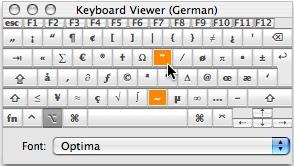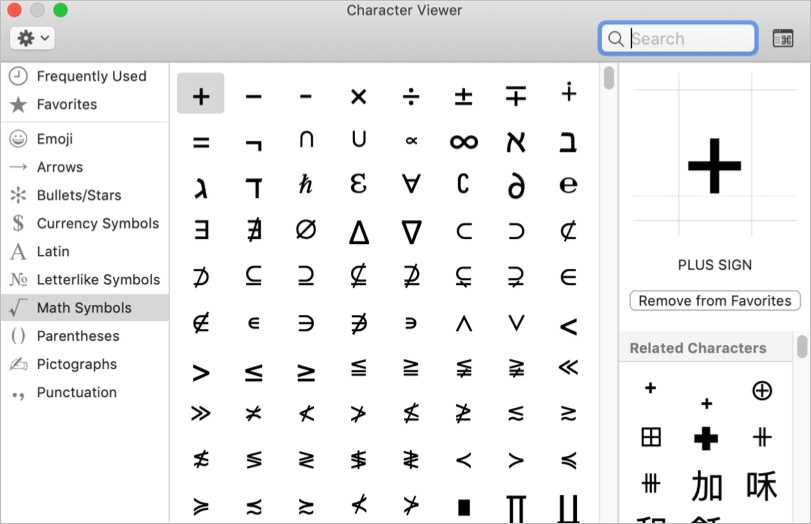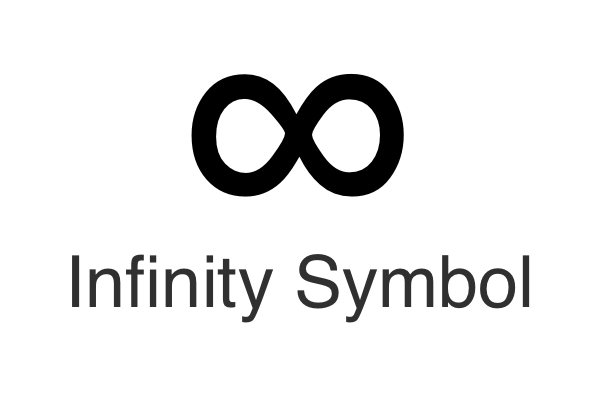Infinity symbol ∞
- Where To Find Infinity Symbol In Word For Macs
- Where To Find Infinity Symbol In Word
- Where To Find Infinity Symbol In Word For Mac Download
- Where To Find Infinity Symbol In Word For Macbook Pro
On the Edit menu, click Emoji & Symbols. Click the symbol that you want. How to insert other symbols and templates in an equation, see Shortcut keys for inserting symbols and templates into the equation. How to use all these symbols outside the equation, select the option Use Math AutoCorrect rules outside of math regions in the Word Options. How to do it, see Choosing Math AutoCorrect options. The infinity symbol is a mathematical symbol that represents an infinitely large number. An infinity loop or endless loop could be used in PowerPoint presentations, for example to represent a endless process or to describe a workflow that runs infinitely. Actually, there many possible applications so this kind of symbols could be very useful. Return to Math Symbols Page Go to the About the Codes section to see how they are implemented. Page Content Greek Letters New Page Common Arithmetic & Algebra Superscript and Subcript Statistic.
Infinity ∞ is a maths text symbol for an infinite number that people had been texting from the times when ASCII encoding was developed. And you can type it right from your keyboard. I'll show you how to do it by using different techniques depending on your Operating System and tastes.
| Maths Emoji | ➕ | ➖ |
|---|---|---|
| ✖ | ➗ |
What infinity mean
Infinity symbol created by John Wallis in 1655 refers to things without any limit. Usually is used in mathematics or physics to express that some things have no limit. For example, set of natural numbers has no limit and could be expressed by infinity ∞ sign. Infinity is designated as the ∞ symbol because it was imagined as a special variation of ouroborus snake - an ancient symbol depicting a serpent or dragon eating its own tail.
How to input infinity symbol
Choose your system to find out.
From Keyboard
Alt Codes
Shortcut technique that works on Desktops and most Laptops running MS Windows. You press Alt and, while holding it, type a code on Num Pad while it's turned on. Please, read a guide if you're running a laptop . You can type many frequently used symbols with this method.
| Alt code | Symbol |
|---|---|
| 236 | ∞ |
Shift States
Configure your keyboard layout in Windows so that you can type all additional symbols you want as easy as any other text. Takes about 5-10 minutes to set things up, but you'll be typing like a boss. You can assign infinity symbol ∞ and any other text characters to your keyboard using this technique.
Character Map
CharMap allows you to view and use all characters and symbols available in all fonts (some examples of fonts are 'Arial', 'Times New Roman', 'Webdings') installed on your computer. You can input infinity symbol using it.
Emoji on iOS (iPhone, iPad and iPod touch)
Keyboard viewer
You can make frequently used technical non-fancy symbols like '√ ∑ π ∞ ∆ ™ © æ £ ¢' and åccénted letters on Mac using [Option] key. I've compiled a list of shortcuts in my article and explained how to open keyboard viewer. You can also use your Keyboard Viewer as an alternative to my list.
[Option] + [5] produces ∞ infinity sign.
Character Palette
Character Palette allows you to view and use all characters and symbols, including infinity, available in all fonts (some examples of fonts are 'Arial', 'Times New Roman', 'Webdings') installed on your computer.
From Keyboard
| Unicode hex code | Symbol |
| 221E | ∞ |
There actually are 3 different ways to type symbols on Linux with a keyboard. But only third and fourth level chooser keys and unicode hex codes can produce infinity text symbol.
Character map
Character map allows you to view and use all characters and symbols available in all fonts (some examples of fonts are 'Arial', 'Times New Roman', 'Webdings') installed on your computer. It can also help you lookup Unicode codes for entering symbols with keyboard.
Following is a list of HTML and JavaScript entities for infinity symbol. In Javascript you should write like a = 'this u2669 symbol' if you want to include a special symbol in a string.
| HTML entity | JS entity | Symbol |
|---|---|---|
| ∞ | u221e | ∞ |
From Keyboard
Alt Codes
Shortcut technique that works on Desktops and most Laptops running MS Windows. You press Alt and, while holding it, type a code on Num Pad while it's turned on. Please, read a guide if you're running a laptop . You can type many frequently used symbols with this method.
| Alt code | Symbol |
|---|---|
| 236 | ∞ |
Shift States
Configure your keyboard layout in Windows so that you can type all additional symbols you want as easy as any other text. Takes about 5-10 minutes to set things up, but you'll be typing like a boss. You can assign infinity symbol ∞ and any other text characters to your keyboard using this technique.
Character Map
CharMap allows you to view and use all characters and symbols available in all fonts (some examples of fonts are 'Arial', 'Times New Roman', 'Webdings') installed on your computer. You can input infinity symbol using it.
This book is about the Math Builder (officially called as Equation Editor) tool in Microsoft Word and Outlook 2007 and higher. It also applies to Microsoft PowerPoint and Excel 2010 and higher. Note that this is a different tool than the legacy tool Equation Editor 3.0 (which is still available on 32-bit Office versions until the January 2018 update[1]) and MathType.
Typesetting mathematics on a computer has always been a challenge. The mathematical community almost universally accepts a typesetting language called LaTeX. Math Builder is a much easier to use tool that has less functionality than LaTeX but more than typical document processing. Microsoft call this hybrid language the Office Math Markup Language, or OMML for short. It is an appropriate tool for:
- Typing any document whose focus is not itself mathematics.
- Typing a short math document quickly.
- A stepping stone between word processing (MS Word) and typesetting (LaTeX)
Note that Math Builder does not perform any mathematics; it is a tool for displaying it.
Pros and Cons[edit]
Pros:
- Math Builder is WYSIWYG: after typing an equation you see immediately what it looks like.
- It's easy to get started: it's already built in to Microsoft Word. Common symbols have point-and-click icons.
- It's easy to use: Common symbols have keyboard shortcuts so that a veteran user need not use a mouse at all.
- Nearly all symbols use the same commands as LaTeX.
- The format used is non-proprietary and given in Unicode Technical Note #28.
- It can be used in Outlook to easily write equations in emails; it renders as images to the recipent.
Cons:
- Some uncommon symbols are not listed in the menu and require knowing the keyboard shortcut. Typically this is the LaTeX code for the symbol.
- There are differences between Math Builder and LaTeX code: advanced functionality that requires more than just a symbol tend to follow the same flavor but have slightly different syntax. Math Builder code tends to be shorter than LaTeX code and disappears upon completion to the WYSIWYG output. Examples here are matrices, multiple aligned equations, and binomial coefficients.
- No LaTeX typesetting tools such as labels and references are implemented.
- No highly advanced LaTeX tools such as graphing, commutative diagrams, or geometric shapes are implemented. (Note:- Geometric shapes are otherwise available in the Insert ribbon)
- Students studying mathematics might not be motivated to learn LaTeX because they might be able to get by with Equation Builder in Word to satisfy the vast majority of their needs. However, when such a student reaches the limits, unlike LaTeX there is absolutely no recourse to expand the program to satisfy it.
Inserting an equation[edit]
Microsoft Word has two different typing environments: text and math. To obtain the math environment, click on 'Equation' on the 'Insert' ribbon on Windows or Word for Mac '16, or in 'Document Elements' on Word for Mac '11. The keyboard shortcut is 'alt'+ '='. For a Mac system, the shortcut is control + '='. Everything you type in this environment is considered math: all automatic formatting of text is disabled. To exit the math environment, click on any text outside the math environment. One easy way to do this is by pressing the right arrow key.
Common Mathematics[edit]
Fractions[edit]
There are multiple ways to display a fraction. The default is vertically aligned as illustrated below. Obtain this by typing the fraction and pressing space: 1/2
Linear fraction (resp. skewed fraction) is obtained using ldiv (resp. sdiv) and pressing space (twice) or by typing 1 ldiv 2 (resp. 1 sdiv 2) and pressing space. While you can also do this by right-clicking on the equation and clicking Linear, this affects the whole equation and not just the fraction.
Parenthesis, brackets, and braces[edit]
Grouping symbols will automatically size to the appropriate size. These symbols include '(), {}, [], ||'. For instance, the expression below can be obtained with (1/2(x+1)):
Be careful to press space after the '2' to render the fraction, otherwise Word might put 'x+1' in the denominator. Also press space after typing every closing parenthesis ')', which will adjust both the opening and closing parentheses size to fit the group's contents. Because the 1/2 fraction is is quite tall, the outer parentheses need to be adjusted to enclose the fraction appropriately. To be exact, the key presses required to reproduce the equation above are (1/2space(x+1)space)space.
Exponents and subscripts[edit]
Exponents can be obtained by using '^' and subscripts by '_'. The monomial below can be obtained by typing x_2^5 or x^5_2 and pressing space.
Symbols: etc[edit]
These are all common symbols. The easiest thing to do would be to find a LaTeX reference sheet. A few of those symbols are shown here:
| code | output |
| neq or /= | |
| leq or <= (resp. geq or >= ) | (resp ) |
| subseteq | |
| vee | |
| rightarrow | |
| Rightarrow | |
| times | |
| div | |
| pm | |
| infty | |
| otimes (resp. oplus) | (resp. ) |
| hbar | |
| partial |
Greek, Script, and Fraktur letters[edit]
The math environment implements 3 fronts in addition to the default.
Where To Find Infinity Symbol In Word For Macs


- Greek letters can be obtained by typing a ' followed by the name of symbol. Capitalizing it creates a capital letter. delta Delta produces
- Script letters can be obtained by typing ' followed by 'script' followed by the letter. scriptd scriptD produces
- Fraktur letters can be obtained by typing ' followed by 'fraktur' followed by the letter. Fraktur does not have capitals. frakturd prodouces
Blackboard Bold letters[edit]
Blackboard bold letters can be obtained by typing ' followed by 'double' followed by the letter. doubled doubleD produces
Mathematical Physics[edit]
Vectors[edit]
A vector is often denoted by an overhead right arrow, which can be obtained by following a letter variable with 'vec': . Unit vectors (e.g. ) are denoted by a hat (circumflex), which can be obtained by following a letter variable with 'hat'. The gradient (also known as del or nabla) operator may be displayed using 'nabla'.
Newtonian Dot Notation[edit]
Dot notation for time derivatives (e.g. )can be obtained by following a letter variable with 'dot' for a first derivative and 'ddot' for a second derivative.
Vector Products[edit]
The dot product (inner product) can be displayed using the centered dot symbol 'cdot' e.g. the divergence . The cross product can be displayed using 'times' e.g. the curl .

Matrices[edit]

Matrices are obtained with the 'matrix' symbol. Use parentheses to start and end the matrix. Use '@' to separate rows, and '&' to separate columns. The matrix below can be created by typing [matrix(1&2&3@4&5&6)].
Multiple Aligned Equations[edit]
Aligning equations can be obtained with the 'eqarray' symbol. Use parentheses to start and end the matrix. Use '@' to separate equations. Use '&' to specify alignment and whitespace. The first '&' and then every other occurrence is alignment. The second and then every other occurrence is white space. The equations below can be obtained by typing the following text:
(The math environment here seems to be adding excess space between the alignments that doesn't occur in Word)
Radicals[edit]
Radicals are obtained using the 'sqrt' symbol, followed by the index, then '&', then the radicand.
For example: sqrt(a&b) will output .
Additionally, sqrt(x) will simply output .
Integrals[edit]
| code | output |
| Double oriented integral (No corresponding Wikibooks math symbol) | |
| Triple oriented integral (No corresponding Wikibooks math symbol) | |
| Clockwise oriented integral (No corresponding Wikibooks math symbol) |
Integrals are obtained by inserting the desired integral symbol (see above table), and then pressing space twice.[2]
For example: int_a^bspacespace1/xspacedx will output
Inline versus Display[edit]

Where To Find Infinity Symbol In Word
Equations have two forms. Inline specifies that the equation is to be in line with text. This affects a few expressions to make them appear smaller. For instance fractions will use a smaller font. Summations and integrals will place the endpoints to the right of the symbol instead of below it.Display specifies to use as much space as needed. Display mode equations must appear on their own line.
Modifying and creating shortcuts[edit]
Everything in Math Builder requires special symbols that the computer knows how to interpret. These symbols are constructed with all the commands starting with ' as illustrated in the above sections. This is implemented via math autocorrect which you can modify. For instance, you might like to use ra instead of rightarrow. You can do this by adding the command to the math autocorrect directory.
References[edit]
Where To Find Infinity Symbol In Word For Mac Download
- ↑https://support.office.com/en-us/article/Equation-Editor-6eac7d71-3c74-437b-80d3-c7dea24fdf3f
- ↑Iztok Hozo. 'Using Word 2007’s new equation editor' (in English). Indiana University Northwest. http://iun.edu/~mathiho/useful/word07shortcuts.pdf. Retrieved 06-05-2019.